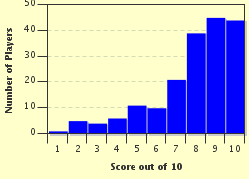Quiz Answer Key and Fun Facts
1. Dora is gambolling around forests in Madagascar. She's pleased to have come across this the world's largest nocturnal primate with some unusual features including rodent-like teeth and a very thin middle finger. "Sounds a bit Scottish to me", Dora comments to you, "Maybe a Scot discovered it." What is she on about?
2. Dora is in the UK visiting her Aunt Maisy. Making the most of opportunity to explore, her aunt points her in the direction of a sett behind her house where she can find this black and white faced weasel-family member. What night shift animal might this be?
3. Catching up with Dora in the morning, you find that she has been out for a spot of night fishing at the local pond. She proudly displays her whiskered catch. "What have you got there?", you ask. "I was playing a bit of a 'cat and mouse' game except this time the fish was the mouse", said Dora laughing. What nocturnal fish is Dora likely to have caught for breakfast?
4. "Look what I found!", said Dora coming into the kitchen one dark Virginia evening. "I was having a look around when I came across this dead animal. It is still warm but maybe that is due to its fur." You point out that this white-faced animal is actually only playing dead and that it would be a good idea to put it outside before it comes to. What has Dora found?
5. Dora was hunting around outside the house last night and found an interesting creature. She last saw it scurrying away under the house. "But", said Dora, "I am not sure what it was. I'm sure it had eight legs but it didn't look like a spider. It had claws and its tail curved back over its body. What could it be?"
6. Dora was talking about a recent trip down under where she came across a type of possum during one of her night-time rambles. Thumbing through a book, she read: "This squirrel-sized possum glides from tree to tree and has a liking for the sweet sap of certain gum trees amongst others. These habits are reflected in its name." Can you work out what its name might be?
7. During a trip to Kenya with her parents, Dora got to go on a ballooning trip. This involved a pre-dawn start and, once in the air, a chance to spot animals from the air. She watched a couple of spotted dog-like animals chase and catch a wildebeest, and then make a laughing sound. They were soon joined by others. What hunting and scavenging animal has Dora seen?
8. Dora is talking to her mother: "Do you see this insect I found in the wood stack. I put it in a jar in order to show you but then forgot about it. I guess it must have been a couple of weeks ago and it is still alive." "Yes, I've also heard that they can live without their heads for a couple of weeks as well. But I don't think we want that pest in the kitchen. They are a real health hazard and leave potentially harmful bacteria wherever they go", her mother replied. What night shift creature could this be?
9. "Describe what you found last night, Dora", you say. "Well, it was a big hairy spider as big as my hand. It didn't have a web but I saw it ambush a cricket. The cat appeared and got a bit close so the spider reared up on its legs. The cat then ran off." What is Dora describing?
10. Visiting some farming cousins in Australia allows Dora to seek out this interesting nocturnal tunnel-dwelling marsupial. With a backwards facing pouch and a penchant for going through fences and other obstructions rather than around them, Dora discovers that they are not her cousins' favourite animal. What animal could this be?
Source: Author
suomy
This quiz was reviewed by FunTrivia editor
Tizzabelle before going online.
Any errors found in FunTrivia content are routinely corrected through our feedback system.

